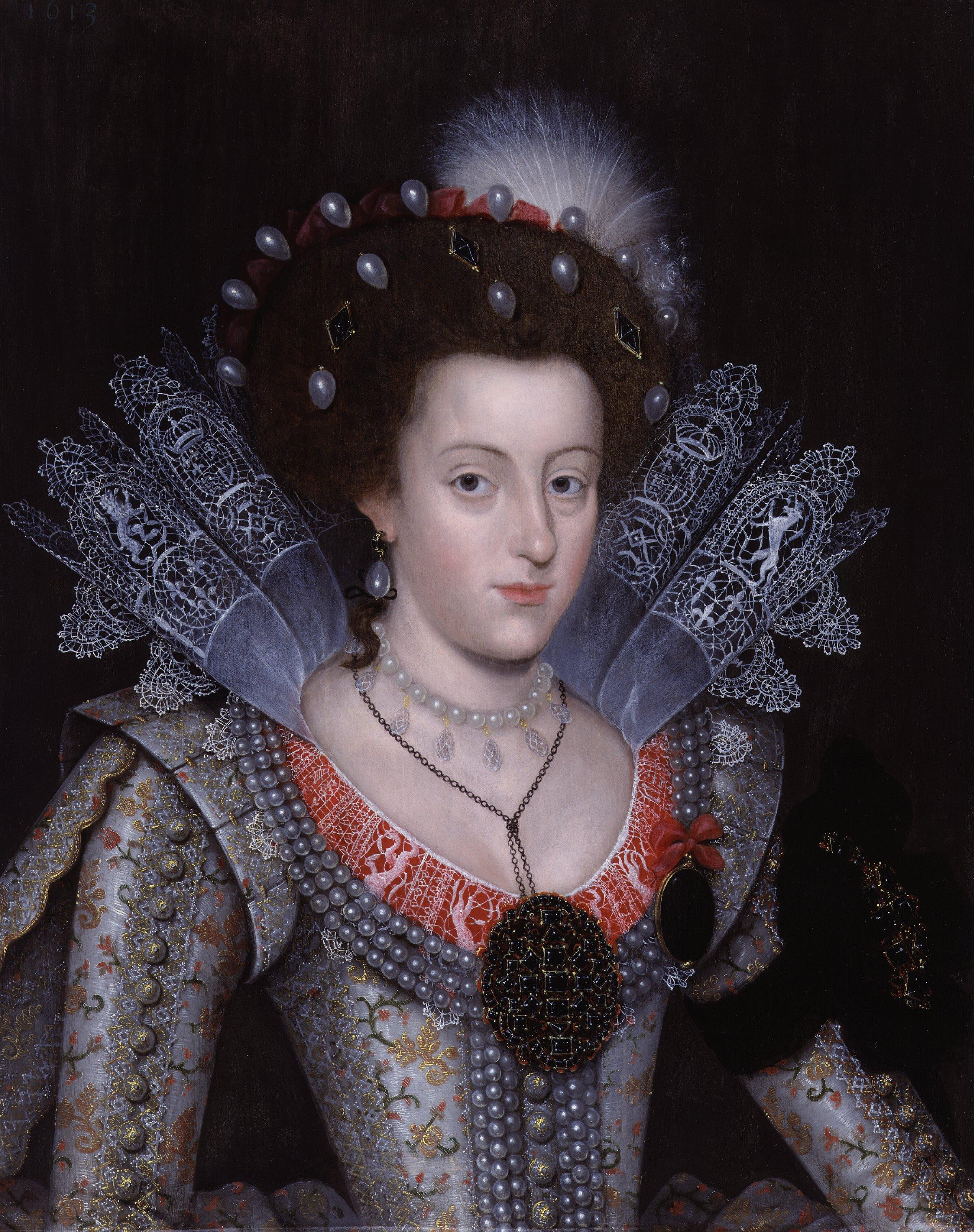Reticella on:
[Wikipedia]
[Google]
[Amazon]
 Reticella (also reticello or in French point coupé or point couppe) is a
Reticella (also reticello or in French point coupé or point couppe) is a
Image:Larkin cary detail.jpg, English woman wearing a reticella lace collar and cuffs tinted with yellow starch, c. 1614-1618
Image:Reticella vinciolo.gif, Pattern for reticella or ''point couppe'' from Vinciolo's ''Les Singuliers et Nouveaux Pourtaicts'', 1609 reprint of 1587 edition.
Berry, Robin L.: "Reticella: a walk through the beginnings of Lace" (2004) (PDF)
*Kliot, Jules and Kaethe: ''The Needle-Made Lace of Reticella'', Lacis Publications, Berkeley, CA, 1994. . *Montupet, Janine, and Ghislaine Schoeller: ''Lace: The Elegant Web'', . * Ribeiro, Aileen: ''Fashion and Fiction: Dress in Art and Literature in Stuart England,'' Yale, 2005, *Vinciolo, Federico: ''Renaissance Patterns for Lace, Embroidery and Needlepoint'', Dover Books, 1971.
Online facsimile of Vinciolo's ''Les Singuliers et Nouveaux Pourtaicts''
Needle lace Textile arts of Italy Textile arts of France {{textile-arts-stub
 Reticella (also reticello or in French point coupé or point couppe) is a
Reticella (also reticello or in French point coupé or point couppe) is a needle lace
Needle lace is a type of lace created using a Sewing needle, needle and yarn, thread to stitch up hundreds of small stitches to form the lace itself.
In its purest form, the only equipment and materials used are a needle, thread and scissors. T ...
dating from the 15th century and remaining popular into the first quarter of the 17th century.
Reticella was originally a form of cutwork
Cutwork or cut work, also known as ''punto tagliato'' in Italian, is a needlework technique in which portions of a textile, typically cotton or linen, are cut away and the resulting "hole" is reinforced and filled with embroidery or needle lace.
...
in which threads were pulled from linen
Linen () is a textile made from the fibers of the flax plant.
Linen is very strong, absorbent, and dries faster than cotton. Because of these properties, linen is comfortable to wear in hot weather and is valued for use in garments. It also ...
fabric to make a "grid" on which the pattern was stitched, primarily using buttonhole stitch
Buttonhole stitch and the related blanket stitch are hand- sewing stitches used in tailoring, embroidery, and needle lace-making.
Applications
Traditionally, this stitch has been used to secure the edges of buttonholes. In addition to reinf ...
. Later reticella used a grid made of thread rather than a fabric ground. Both methods resulted in a characteristic geometric design of squares and circles with various arched or scalloped borders.
Books of patterns for reticella designed by Federico de Vinciolo (France, 1587) and Cesare Vecellio
Cesare Vecellio (c. 1521 – c. 1601) was an Italian engraver and painter of the Renaissance, active in Venice.
He was the cousin of the painter Titian. Like Titian, he was born in Cadore in the Veneto. He accompanied Titian to Augsburg in 1548, ...
(Italy, probably from the 1590s but printed 1617) were popular and were frequently reprinted.
Reticella developed into Punto in Aria ''Punto in aria'' band, Italy, 1601-50
''Punto in aria'' (literally “stitch in air”) is an early form of needle lace devised in Italy. It is considered the first true lace because it was the first meant to be stitched alone, and not first onto ...
.
Notes
References
Berry, Robin L.: "Reticella: a walk through the beginnings of Lace" (2004) (PDF)
*Kliot, Jules and Kaethe: ''The Needle-Made Lace of Reticella'', Lacis Publications, Berkeley, CA, 1994. . *Montupet, Janine, and Ghislaine Schoeller: ''Lace: The Elegant Web'', . * Ribeiro, Aileen: ''Fashion and Fiction: Dress in Art and Literature in Stuart England,'' Yale, 2005, *Vinciolo, Federico: ''Renaissance Patterns for Lace, Embroidery and Needlepoint'', Dover Books, 1971.
External links
Online facsimile of Vinciolo's ''Les Singuliers et Nouveaux Pourtaicts''
Needle lace Textile arts of Italy Textile arts of France {{textile-arts-stub